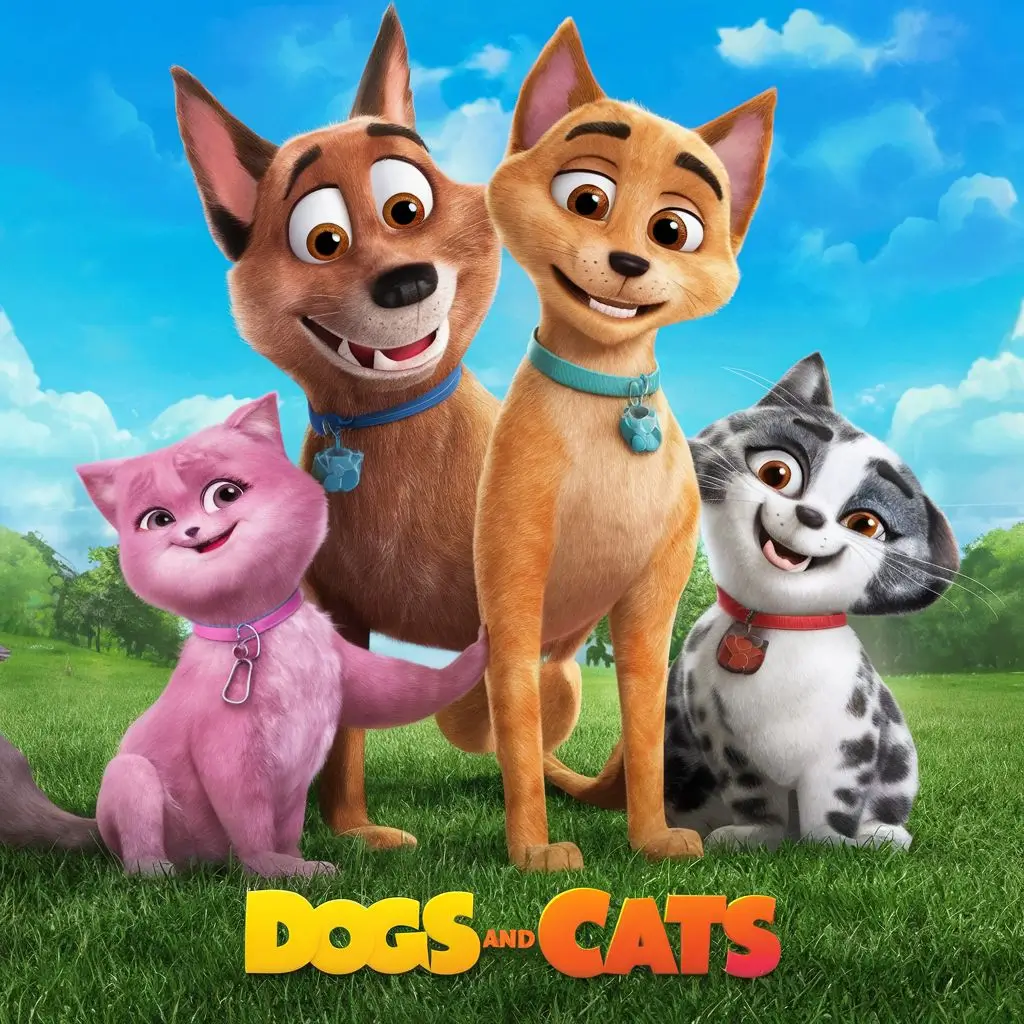Testing Out Ideogram 1.0: My Hands-On Experience
AI image generation tools are one of the hottest trends in tech right now. They give anyone the ability to conjure up visuals simply by describing them. Ideogram, a major player in this space, recently launched version 1.0 of their model.
They claim it offers incredible photorealism, understands detailed requests, and even has a feature to help you write better prompts. In this blog post, I’m taking a hands-on look at Ideogram 1.0 to see if it lives up to the hype.
I’m no stranger to image generators, but I’m particularly interested in how Ideogram 1.0 might be a game-changer. Could it be a go-to tool for:
- Marketers: Needing quick, eye-catching visuals for ads and campaigns
- Bloggers: Like me, who want to illustrate posts without relying on stock photos
- Anyone: Who needs a burst of creative inspiration
Let’s check and see what this AI tool can do!
What’s New in Ideogram 1.0
Ideogram’s newest release is a significant upgrade from previous versions. Here’s a breakdown of their most exciting features:
State-of-the-Art Text Rendering
Historically, text within AI-generated images has been prone to errors. Ideogram 1.0 promises massive improvements. This means you can reliably use it for memes, logos, posters, and anything where text is a core element of the image.
Photorealism and Prompt Adherence
This new model seems to understand complex descriptions incredibly well. The results are sharp, detailed images that closely match your prompts. Not only can it handle photorealistic images, but the artistic outputs are also stunning. Even better, you can now generate images in various aspect ratios and tweak their artistic style.
Magic Prompt
Sometimes coming up with that perfect description can be tough. Ideogram’s new “Magic Prompt” feature is like a creative assistant. It takes your basic prompt, enhances it, or even translates it to different languages, potentially getting you much better results.
Community and Paid Subscriptions
While the free plan still remains, Ideogram 1.0 introduces paid subscription options. These offer extra features like priority generation, private image creation, the ability to upload your own images, and access to the Ideogram Editor.
Ideogram claims that version 1.0 is a major step up in both the quality and accuracy of its image generation capabilities. Their own tests even suggest it might be exceeding rival platforms like DALL-E.
Ideogram 1.0 at Work
The claims on Ideogram’s blog sounded impressive, but the real test is putting the AI to work. Here’s a breakdown of some prompts I tried and how Ideogram 1.0 performed:
Prompt 1
Digital ad of pizza with text “Proof that good things come in circles”.

I was blown away by the result! Ideogram produced an image of a pizza on a slightly textured background. The text, in a playful font, was perfectly integrated, not just slapped on top. This looked like something a designer might put together. This would grab attention on social media or a website easily.
Prompt 2
Movie poster of the animation movie “Dogs and Cats”.

This one had a classic movie poster layout – with a fun title at the bottom! The art style was slightly cartoony like a teaser poster for a major animated film.
Prompt 3
A detailed soft black and white pencil sketch of Albert Einstein isolated on white, with the text, “A person who never made a mistake never tried anything new -Albert Einstein”, typography.

Ideogram nailed the pencil sketch effect. Einstein’s portrait was incredibly lifelike, with every wrinkle and nuance captured. The typography was elegant and fit the mood perfectly. This is apt for creating quote posters for social media.
Prompt 4
Portrait photography of a beautiful actress.

This was a bit trickier. While the woman generated was indeed attractive and looked like an actress. But the expectation of photorealism didn’t meet. Ideogram has a long way to go to compete with the photorealism of Midjourney.
Prompt 5
Watercolor painting of a beautiful landscape with mountains, sky, sun, river, and a house.

Ideogram delivered a stunning watercolor-style landscape! The mountains were majestic, the river meandered realistically, and the house nestled perfectly into the scene. The sun added a warm glow. I was especially impressed with the way it captured the texture of watercolor paint.
Prompt 6
Create a funny meme about the office.

Ideogram generated a classic meme layout with a cartoon photo of a frustrated office worker and the caption, “Monday morning at the office.” The image itself was a bit generic, but the text was spot-on.
The Power (and Limits) of Prompts
My experiments with Ideogram 1.0 highlighted the fascinating dance between the clarity of my prompts and the AI’s ability to interpret them. A well-crafted prompt can yield incredible results, but it also made me realize the limitations of this kind of image generation.
The Art of Refinement
For example, my initial attempt at “Portrait photography of a beautiful actress” was underwhelming. Ideogram understood the basics, but the image lacked that star quality. Adding descriptors like “red carpet” and “glamorous” helped guide the AI towards a more specific aesthetic and improved the outcome. Sometimes, using Ideogram’s “Magic Prompt” feature also sparked more interesting ideas. It became a collaborative process of refining my requests to get closer to what I envisioned.
The Balance of Specificity
While detailed prompts are vital, there’s also joy in leaving room for the AI to surprise you. Intentionally vague prompts can spark unexpected creativity. When I asked for a “watercolor painting of a beautiful landscape with mountains…,” I didn’t specify the type of house. Ideogram surprised me with a charming little cottage that completed the scene perfectly. These serendipitous moments highlight the unique potential of AI image generators as creative partners.
Finding the Sweet Spot
The best results emerge when there’s a balance between precision and artistic freedom. As a user, it’s my job to communicate my intent as effectively as possible. Meanwhile, it’s the job of the AI to interpret those words and produce something visually compelling. AI excels at the technical side of image creation, but true success relies heavily on our ability, as humans, to guide that process through language.
Ideogram in the Bigger Picture
It’s easy to get wrapped up in the fun of experimenting with Ideogram, but stepping back, it’s clear that this Ideogram has the potential to change how we create visual content. Here’s where I think tools like Ideogram 1.0 might be heading:
- Creative Workflows Reimagined: For bloggers like me, a high-quality image generator could be a lifesaver. Need a specific image to illustrate a post? Ideogram could provide it faster and cheaper than searching stock photo sites, giving even small blogs a much more polished look. Marketers needing eye-catching visuals for social media campaigns could find Ideogram to be a rapid ideation tool.
- Democratizing Art and Design: What if you have no design skills but need a logo for your side project? Ideogram’s text rendering and ability to understand stylistic requests could open doors for those who’d normally be priced out of even basic graphic design.
- Disruption and Ethical Concerns: The rise of AI image generation has sparked debates about its potential effects. Could these tools put some illustrators or stock photo sites out of business? As the technology improves, it also becomes important to consider issues like image ownership, deepfakes, and how AI might contribute to the spread of misinformation.
While I don’t have all the answers, I think it’s vital to acknowledge that tools like Ideogram are more than just a fun toy. They’re part of a rapidly changing landscape that will impact how we create, consume, and even understand visual media.
My hands-on experience with Ideogram 1.0 was eye-opening. While not every image was a masterpiece, the best results were impressive enough that I could definitely see myself using this tool regularly. The improved text rendering, flexible styles, and sheer speed make it a valuable asset in my creative toolkit.
If you’re a blogger, marketer, or just someone who wants to play around with the power of AI-generated visuals, Ideogram 1.0 is definitely worth trying.






